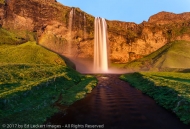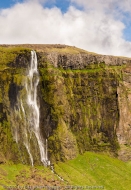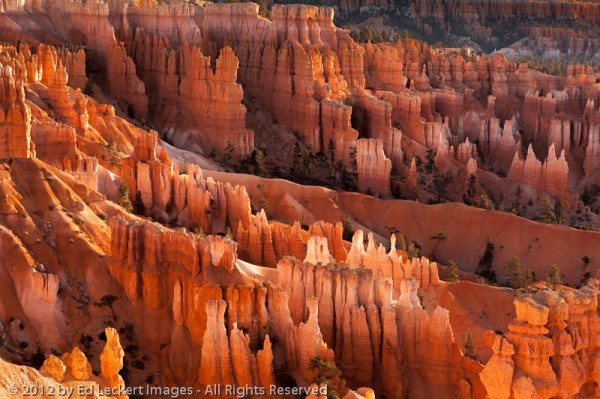


Hoodoos. Goblins. Sounds like something straight out of the occult, doesn’t it? And when they start glowing their eerie orange glow in the early morning light, you wonder if there isn’t something to those creepy monikers.
Back in the Spring of 2012, I had the opportunity to visit Bryce Canyon National Park in Utah with a couple of photographer friends of mine. Bryce Canyon, it turns out, is Ground Zero for massive numbers of hoodoos.
So what are these strange features? Well, hoodoos are tall skinny objects that are commonly found in the High Plateaus of the Colorado Plateau. They are formed when melting snow experiences repeated freeze/thaw cycles and widens cracks in the sides of a plateau of sedimentary rock. Also, carbonic acid in rainwater acts to dissolve limestone more rapidly than other layers, such as mudstone and siltstone layers and the magnesium-rich limestone called dolomite that often caps and protects the hoodoos on top. Thus they develop a totem pole shape as different layers erode at different rates.
What begins as a plateau is gradually worn into a thin strip known as a “fin”. Eventually, areas in the fin get so weakened that they collapse, leaving “windows” as seen in the fin in the foreground of the image below.
Once enough of these windows are created and enlarged, only the poles, or hoodoos are left standing. You can easily see the different layers of sedimentary rock that make up the hoodoos because of their different colors. Note the different shades on the hoodoos in this image.

Early morning light bounces back in forth in the sandstone, making the hoodoos appear to glow, in Bryce Canyon National Park, Utah.
We were hoping to arrive at the park when some of the hoodoos would still be snow-capped, but didn’t quite make it in time. You can see that there was still some snow on the ground, but not enough to top the hoodoos. We did, however, have the pleasure of being there when it was cold enough for ice to form on the inside of our tents at night, so there was that bonus.

Snow lingers in the canyon as storm couds move in, at Sunrise Point, Bryce Canyon National Park, Utah.
One of the most famous and photogenic of the hoodoos is Thor’s Hammer. Thor was a mythical Norse god who liked to go around smashing things, apparently, and so possessed a very famous hammer named Mjölnir which he used to do his dirty work. It seems this thing was powerful enough to level mountains, so I suppose it’s appropriate that Thor might have left it at the scene of some fairly extensive erosive activity.
You might be wondering why the hoodoos have such a red and orange glow to them, especially near the base. This phenomenon, which can also be seen in slot canyons of the desert southwest, occurs when red or orange layers in close proximity reflect sunlight back and forth multiple times, each time deepening the intensity of the color. The effect is strongest in areas close to but not in direct sunlight. During midday the hoodoos look washed out, but in early morning (because Bryce Canyon faces east), the effect is most noticeable.
All in all we had great, albeit short visit to Bryce Canyon. We also visited Zion National Park and various other iconic locations in southern Utah and northern Arizona. I’ll have more on those other areas in future posts.
I know you’ve heard this before, but places like Bryce Canyon are special, and you should try to visit as many of these special gems as possible. It’s good for the soul – trust me!
